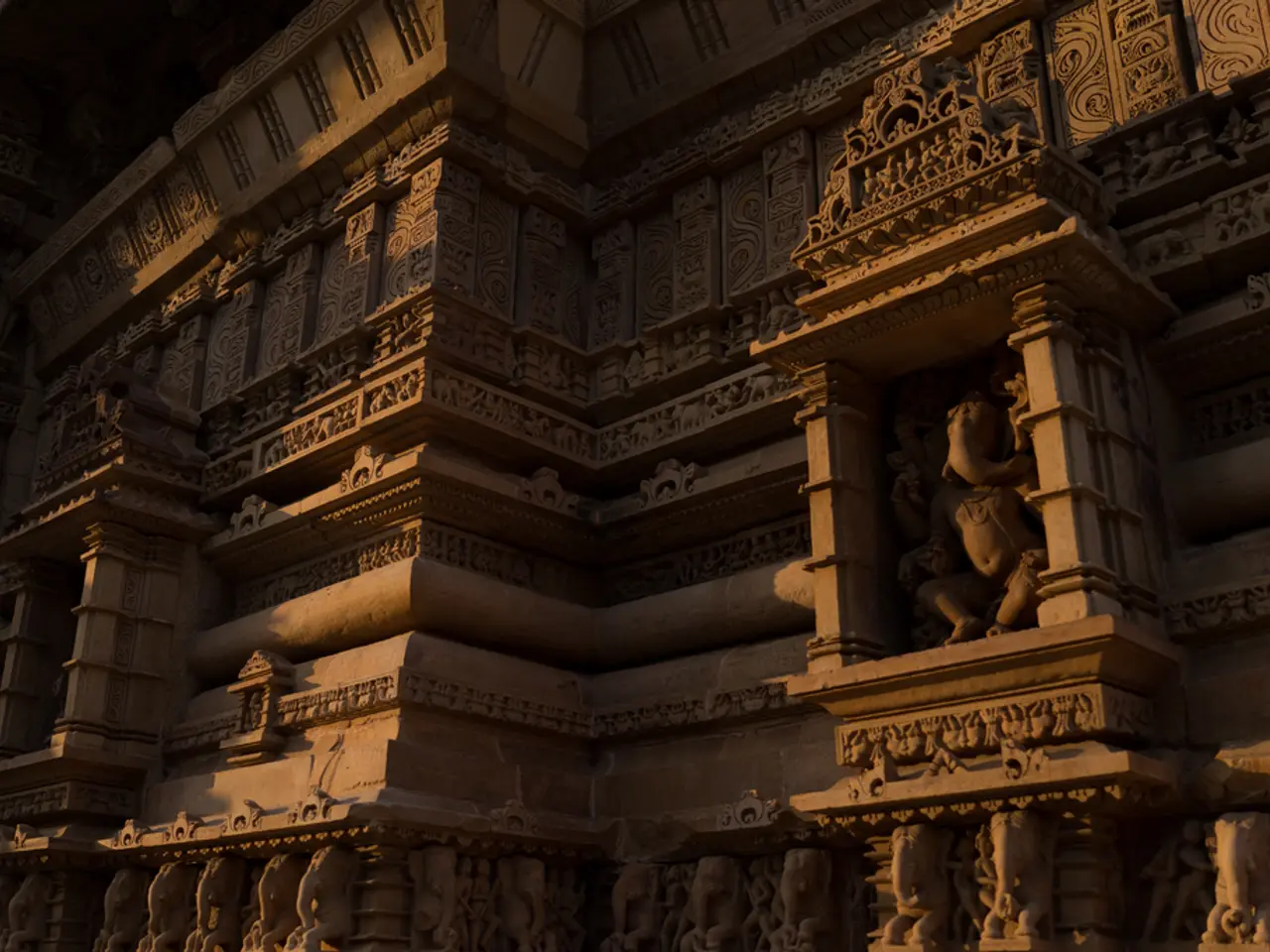Top 5 Essential Historical Sites in Delhi Showcasing Its Colonial Heritage
Delhi, the bustling capital city of India, is a treasure trove of history and architecture, showcasing the influence of British India on its urban planning and architectural styles. Here are five historical places that offer a glimpse into this fascinating era:
Rashtrapati Bhavan
Designed by Sir Edwin Lutyens and completed in 1929, the Rashtrapati Bhavan was originally the Viceroy's House during British rule. This grand building combines neoclassical European styles with Indian architectural elements, such as Mughal-inspired domes and intricate detailing. It occupies a vast 330-acre estate and is a prime example of colonial grandeur blended with Indian craftsmanship. The Delhi Metro's Central Secretariat station on the Yellow Line provides easy access to this iconic landmark.
India Gate
A 42-meter high war memorial arch, India Gate was designed by Sir Edwin Lutyens and completed in 1931. It honours over 70,000 Indian soldiers who died in World War I and reflects British imperial architectural style, inspired by European triumphal arches like the Arc de Triomphe. The Central Secretariat station on the Yellow Line is the nearest metro station, with visitors able to walk or take a short auto-rickshaw ride to reach India Gate.
Maidens Hotel
A charming colonial-era heritage hotel, the Maidens Hotel was established in the early 1900s. Featuring a red-brick facade, arched windows, and lush gardens, it reflects the colonial architectural style and offers a tangible experience of the British era's elegance and refinement. The hotel is centrally located in Delhi and can be accessed from the Delhi Metro's Civil Lines station on the Yellow Line.
Civil Lines Area
Developed during British rule as a residential area for colonial officials, Civil Lines exhibits planned streets, bungalows with wide verandahs, and neoclassical style architecture, reflecting British urban planning ideals adapted to Indian conditions. The closest metro stations include Civil Lines station on the Yellow Line, providing direct access.
Connaught Place
Built in the 1930s as a commercial and financial center, Connaught Place is known for its Georgian-style colonnaded structures arranged in a circular pattern, a hallmark of British urban planning for commercial hubs. It remains a key example of colonial urban design in Delhi. The Rajiv Chowk metro station (interchange station for Yellow and Blue Lines) is located right beneath Connaught Place.
These sites not only demonstrate the British colonial architectural styles—such as neoclassical, Georgian, and imperial designs—but also show British influence on Delhi’s urban planning, with wide avenues, planned residential areas, and centralized commercial zones. The Delhi Metro efficiently connects all these sites, often through key interchange stations like Central Secretariat and Rajiv Chowk, making them accessible for visitors interested in exploring Delhi’s colonial heritage.
The Lodhi Art District, located in Delhi, offers a captivating blend of history and artistic innovation, transforming aged walls into a living canvas. The Indraprastha College for Women, located in Delhi's Civil Lines area, is a historical place, but further details about its architectural style or significance are not provided in the given information. Barh ki Chowki, a 200-year-old police station, showcases a unique blend of Mughal and colonial architecture and can be accessed via the Delhi Metro with the nearest station being Rajiv Chowk.
[1]: Accessible via Delhi Metro's Central Secretariat and Rajiv Chowk stations [3]: Accessible via Delhi Metro's Civil Lines station on the Yellow Line, or nearby stations for other locations in the list
Home-and-garden enthusiasts would appreciate the Maidens Hotel, a charming colonial-era heritage hotel with a red-brick facade, arched windows, and lush gardens.
For those interested in a lifestyle influenced by the British era's elegance, the Civil Lines Area, developed during British rule, exhibits planned streets, bungalows, and neoclassical style architecture.







